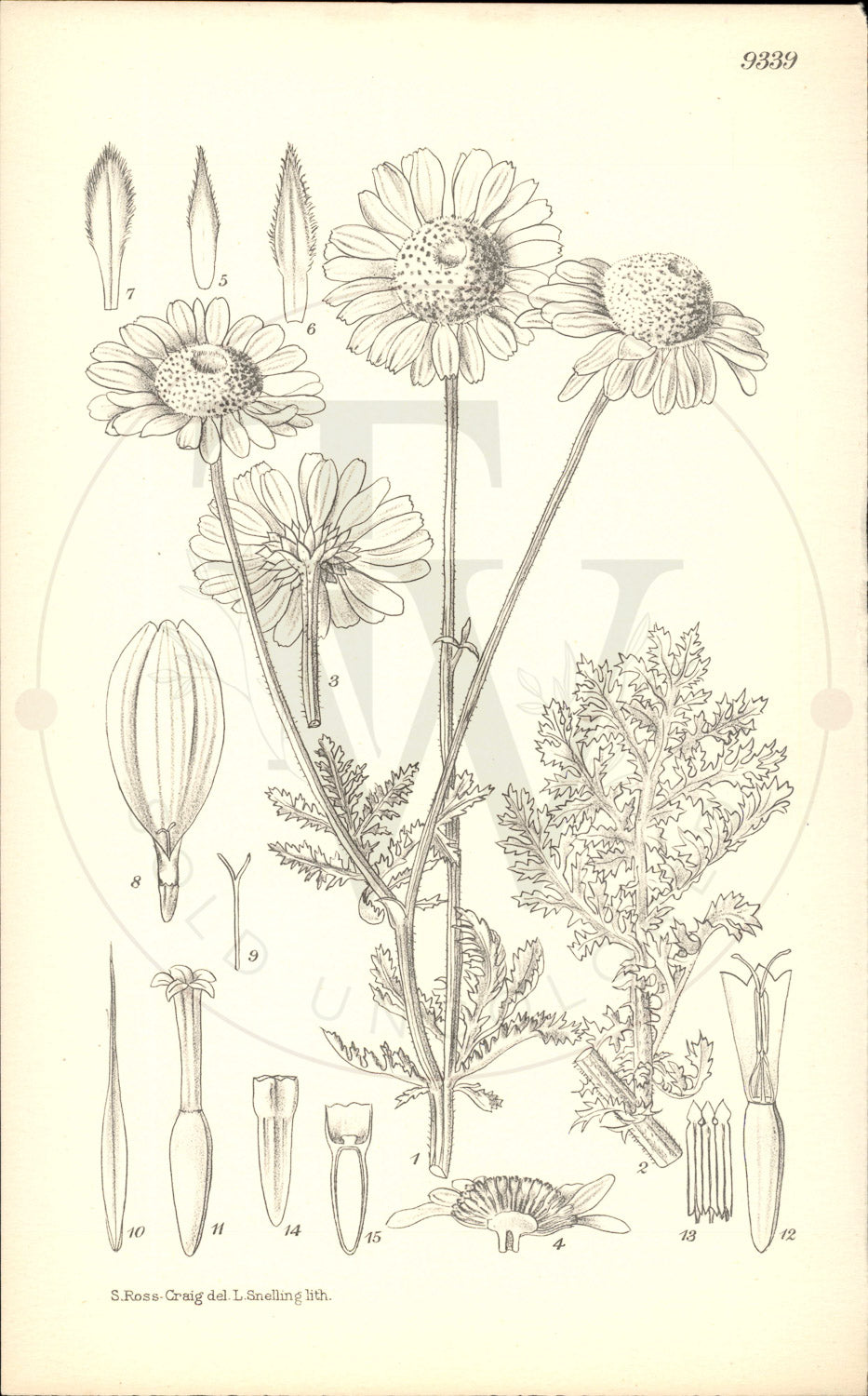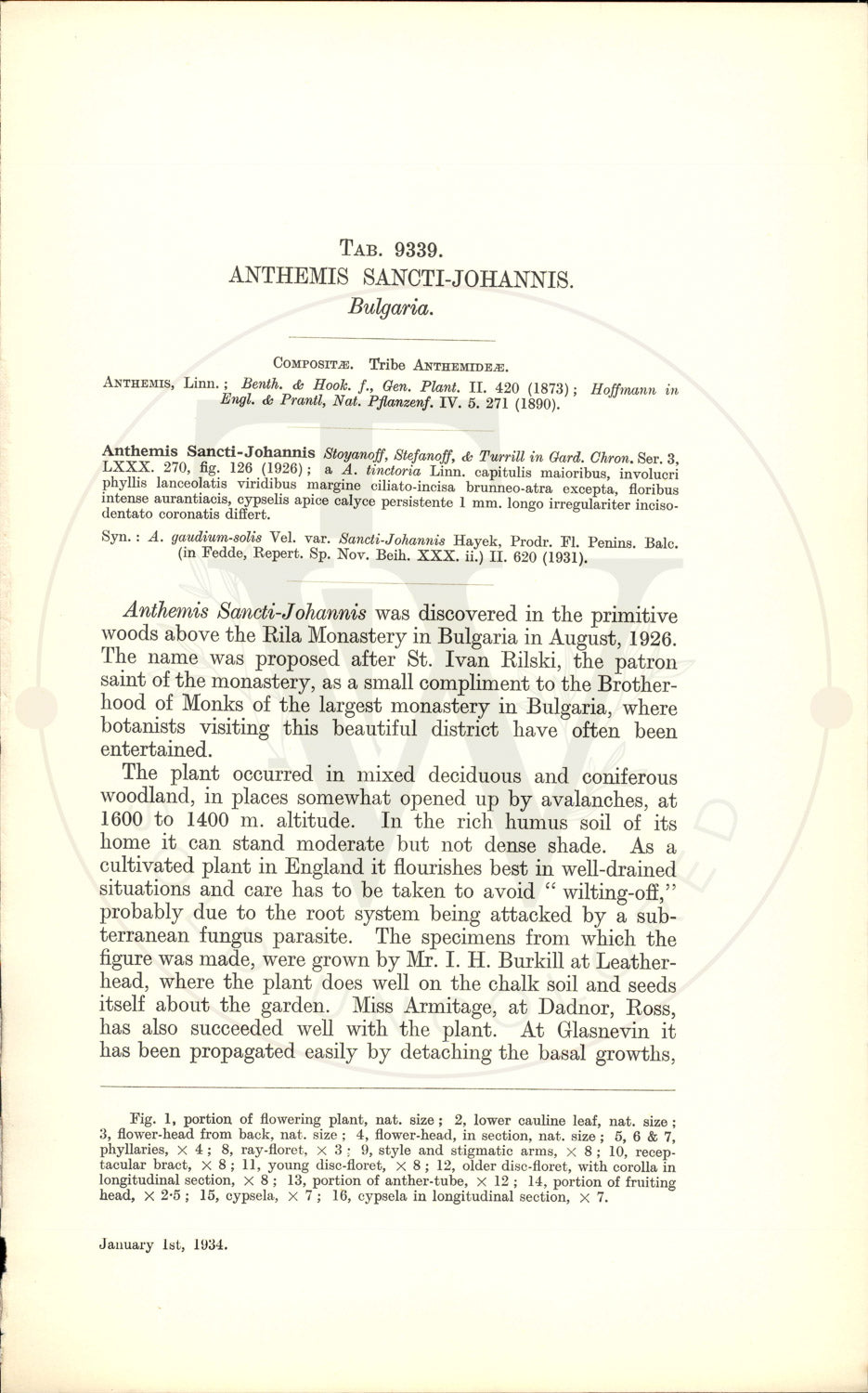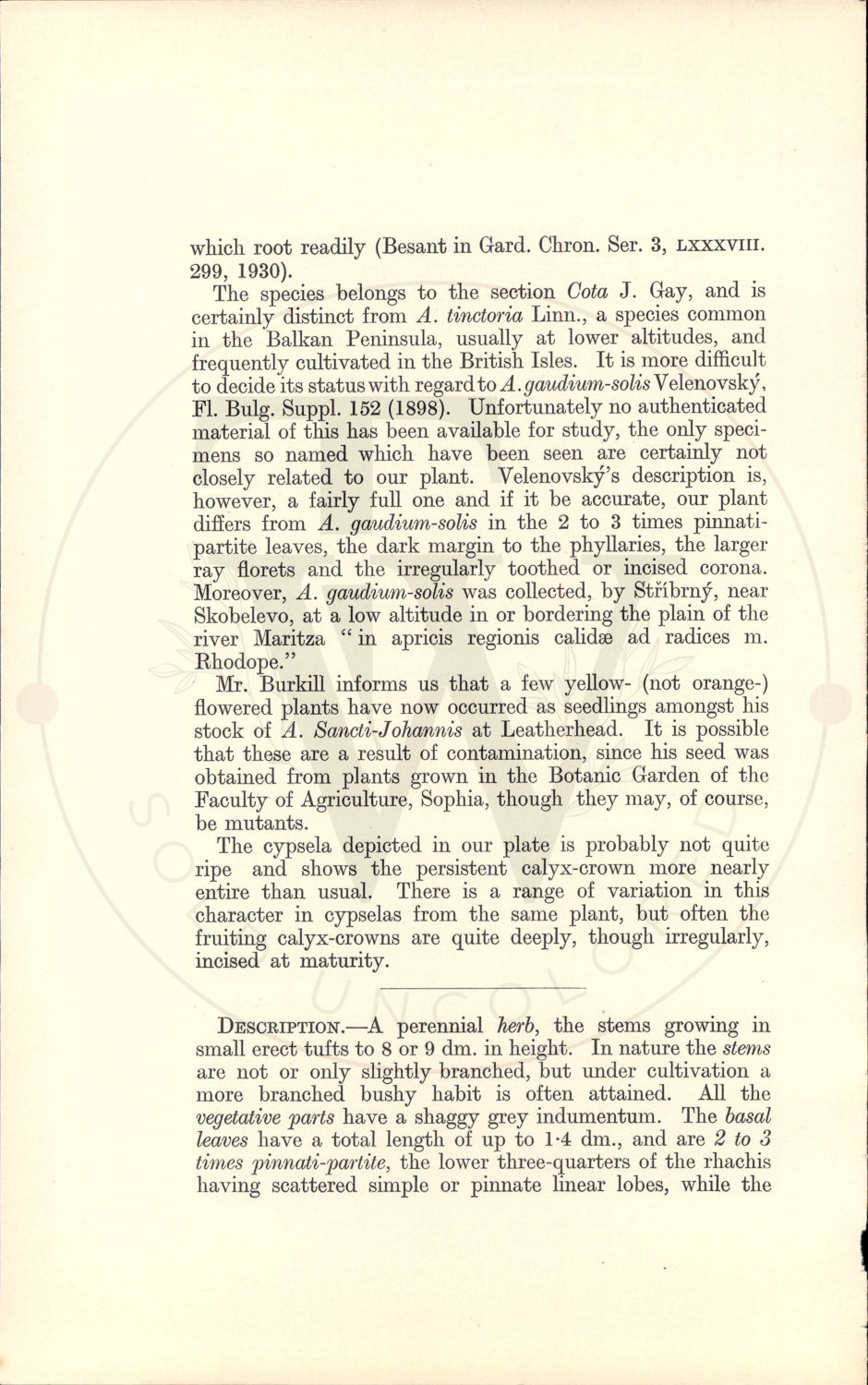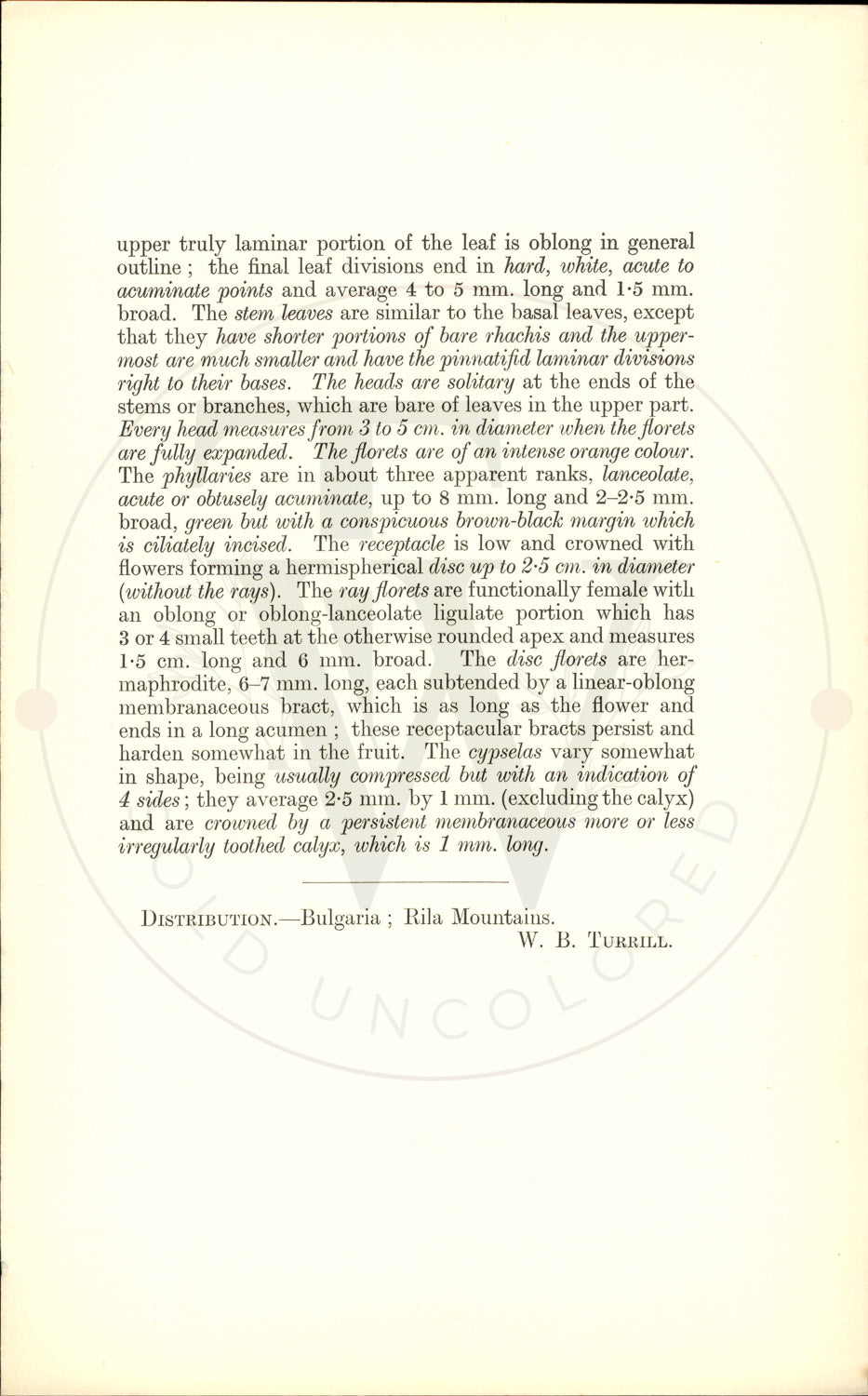Curtis Botanical Magazine
Plate 9339 - Anthemis sancti-johannis
Plate 9339 - Anthemis sancti-johannis
Couldn't load pickup availability
Curtis's Botanical Magazine - Plate 9339
Anthemis sancti-johannis
Family: COMPOSITAE • Tribe: ANTHEMIDEAE • Publication Date: January 1st, 1934
Distribution: China; W. Shensi, S.E. Kansu, Szechuan and Yunnan. N.E. Burma. S.E. Tibet. • Tab Author: W. DALLIMORE.
Botanical Description
The name was proposed after St. Ivan Rilski, the patron saint of the monastery, as a small compliment to the Brother- hood of Monks of the largest monastery in Bulgaria, where botanists visiting this beautiful district have often been entertained. The plant occurred in mixed deciduous and coniferous woodland, in places somewhat opened up by avalanches, at 1600 to 1400 m. altitude. In the rich humus soil of its home it can stand moderate but not dense shade. As a cultivated plant in England it flourishes best in well-drained situations and care has to be taken to avoid "wilting-off," probably due to the root system being attacked by a sub- terranean fungus parasite. The specimens from which the figure was made, were grown by Mr. I. H. Burkill at Leather- head, where the plant does well on the chalk soil and seeds itself about the garden. Miss Armitage, at Dadnor, Ross, has also succeeded well with the plant. At Glasnevin it has been propagated easily by detaching the basal growths,.
Synonyms
Syn. A. gaudium-solis Vel. var. Sancti-Johannis Hayek, Prodr. Fl. Penins. Balc. (in Fedde, Repert. Sp. Nov. Beih. XXX. ii.) II. 620 (1931). Anthemis Sancti-Johannis was discovered in the primitive woods above the Rila Monastery in Bulgaria in August, 1926.
About This Print
Original black and white uncolored botanical print from Curtis's Botanical Magazine (established 1787). This 9000s series print is from unissued publisher stock, never hand-colored, representing the authentic plate as it appeared in the magazine. Edited by Sir Arthur William Hill for The Royal Horticultural Society, London.
Share









